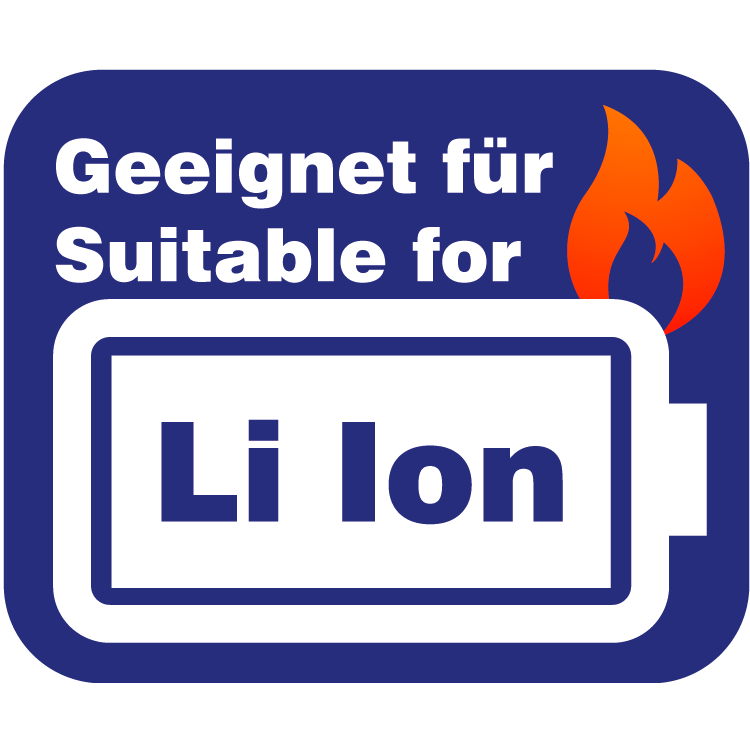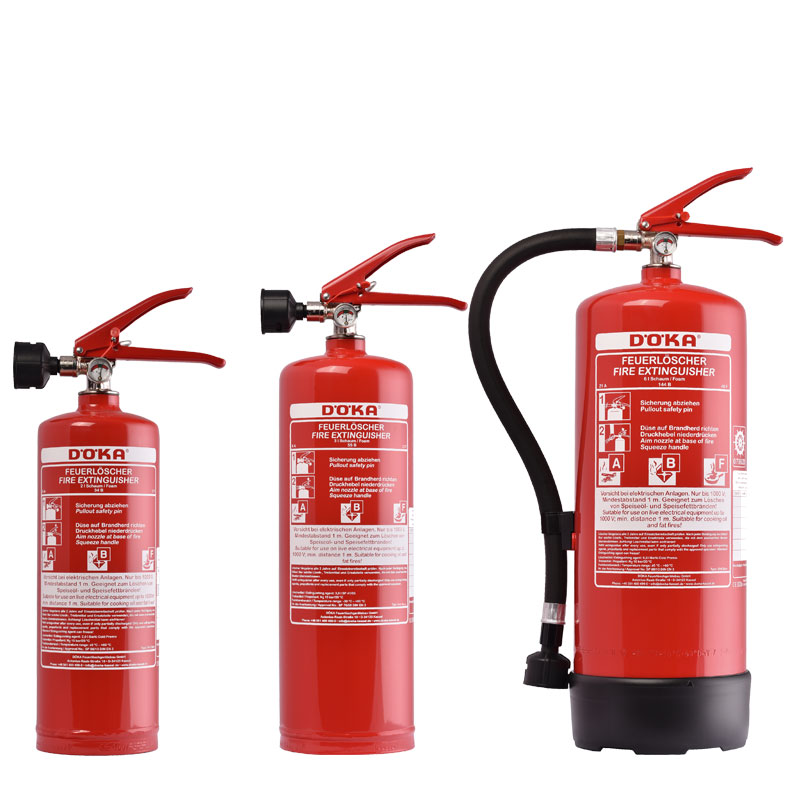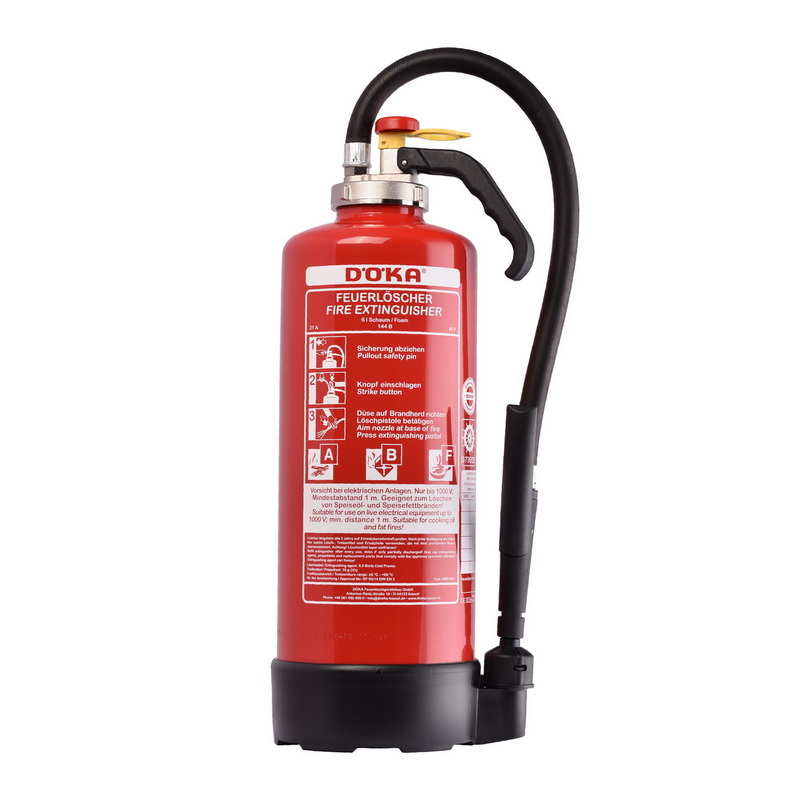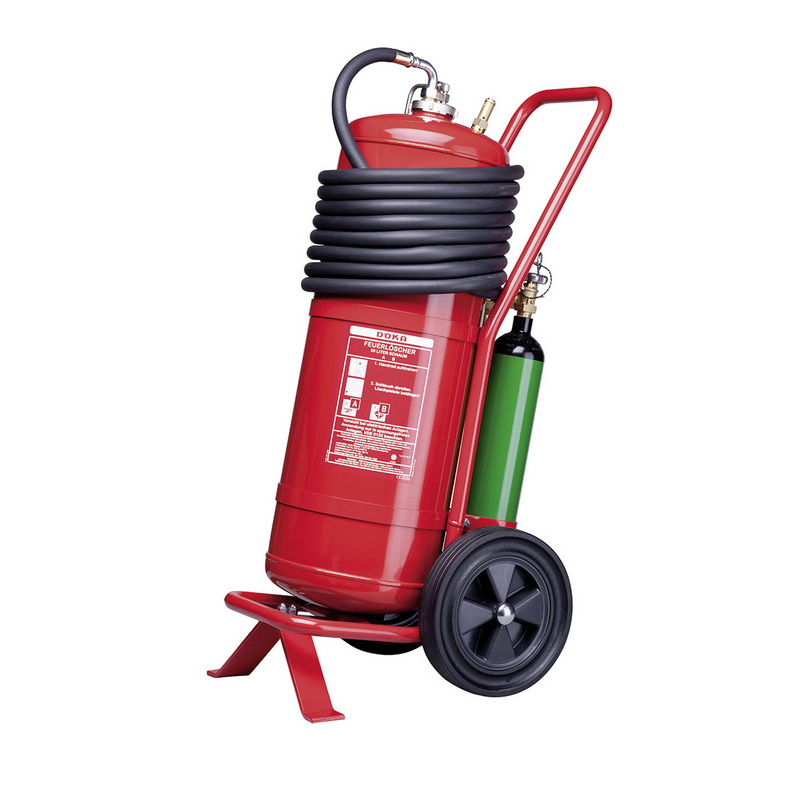Lithium-ion batteries have become an indispensable part of our everyday lives. They can now be found almost everywhere. In smartphones, notebooks, e-cigarettes, e-bikes, gardening tools, tools and also in the automotive sector.
Due to the ever-increasing prevalence of these batteries, fires are of course becoming more frequent. And when a lithium-ion battery starts to burn, you have a problem. A new problem that did not exist before with conventional batteries.
The storage, processing and operation of lithium-ion batteries always harbours dangers that must be considered on a very individual basis. In any case, a corresponding risk assessment must be made for commercial operators. In a private environment, of course, such a risk analysis is not necessary, but if a few precautions are taken, the risk of fire can be significantly reduced. This applies to both new and old and/or defective batteries.
Lithium Batteries Types
Rechargeable batteries / batteries with low power
Batteries (primary cells) with low power, and not rechargeable, are mainly used for computers, consumer electronics, etc.. Button cells" also belong to this category.
Ready-made, rechargeable lithium-ion batteries are installed in smartphones and also belong to the class of low-power batteries.
Batteries with medium power
Lithium batteries (battery packs with several secondary cells) of medium power are used, for example, in e-bikes, gardening tools and tools. The individual cells used are combined into packs of any size, up to battery packs with high power.
Batteries with high power
High-power lithium batteries are found, for example, in motor vehicles. Due to the high voltages and currents, as well as the size of these batteries, extinguishing systems specially adapted to the situation are required.
Storage and handling of lithium-ion batteries
In the commercial sector, the provision and storage of lithium batteries always requires a risk assessment and thus an individual look at each case. Sprinkler and water spray extinguishing systems to fight incipient fires are neither sensible nor economical for many operators (tool shops, bicycle shops, etc.). Depending on the quantities stored, solutions with portable and/or mobile fire extinguishers are therefore practicable. In principle, the so-called STOP principle should be applied in the risk assessment.
The following applies in principle and also in the private environment:
- Store batteries that are not needed, e.g. tool batteries, in a dry place at room temperature.
- Do not leave batteries in the charger. Remove the battery from the charger after charging.
- Never use damaged batteries. Defective batteries can be recognised by deformations of the housing, excessive heating beyond the normal level. Batteries that no longer provide the usual performance are also defective and should not be used any longer.
- Only use suitable chargers. Unsuitable or defective chargers can damage the battery.
After use - Disposal of lithium-ion batteries
Lithium-ion batteries must be disposed of properly.
Before taking the battery to a collection point, tape the terminals with sturdy adhesive tape to prevent short circuits.
Causes of fire - why do lithium-ion batteries burn?
In principle, modern lithium batteries are just as safe as other types of batteries, provided that the manufacturing standards are observed and they are handled properly. If one follows up reports of lithium battery fires a little further, it usually turns out that the batteries concerned were either mechanically damaged (e.g. by falling) or thermally overloaded (by overloading the device). Defective or unsuitable chargers during the charging process have also been the cause of battery fires.
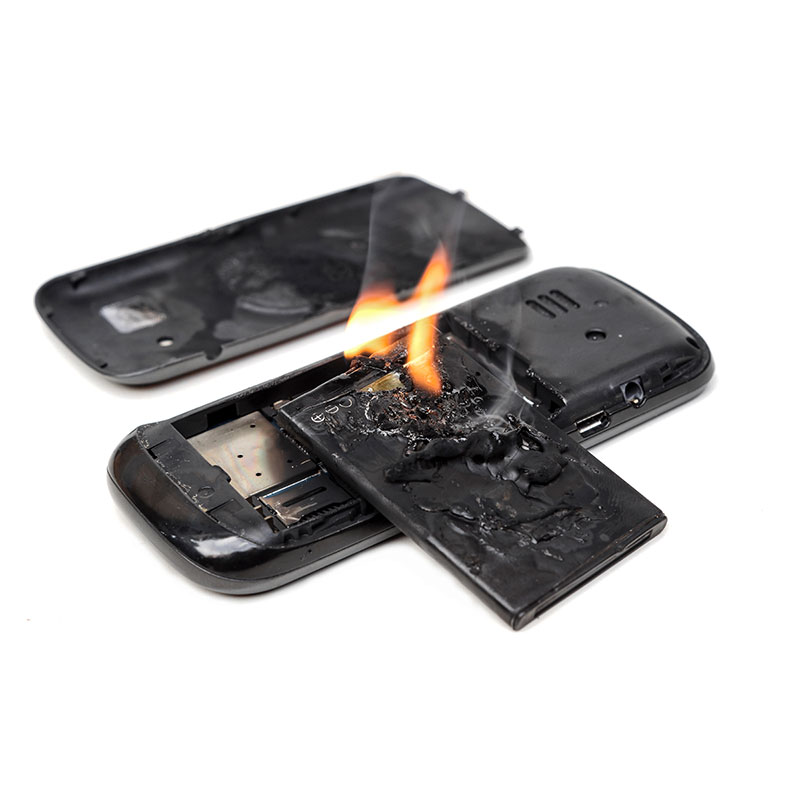
Extinguishing lithium-ion batteries
As a rule, the actual battery cells that pose the problem are not directly visible. They are more or less well packaged in smartphones, notebooks or, in the case of e-bikes, in plastic housings. This means that the burning battery cell is "protected" from the extinguishing agent by the "packaging", or the other way round, the extinguishing agent does not reach the actual source of the fire.
The fire of a lithium-ion battery usually starts very slowly, the cell heats up inside the battery pack. The intensity increases very quickly, however, and ends in the so-called "thermal runaway" and thus a sudden bursting of the battery cell, in which more or less large stub flames can form.
It is therefore almost impossible to extinguish a burning lithium battery cell. Even the VdS does not speak of extinguishing in a leaflet, but only of "... controlling the effects of fires involving lithium-ion batteries."
Some manufacturers of fire extinguishers or extinguishing agents nevertheless claim that their extinguishing agent can actually extinguish these fires. But even they face the above-mentioned problem that the extinguishing agent does not reach the source of the fire. Therefore, this statement must at least be strongly doubted.
Extinguishing agents
Burning lithium-ion batteries can only be cooled. Of these, the extinguishing agents ABC-, BC- and D-powder as well as carbon dioxide are basically not suitable, as they have no cooling effect whatsoever.
Extensive series of tests have come to the conclusion that water with cooling additives is best suited to cool neighbouring cells that have not yet caught fire. This can prevent a chain reaction in which neighbouring cells are ignited. The affected cell can thus burn down in a controlled manner.
Extinguishing agent BerkiCold
Burning battery cells reach temperatures of up to 1000 °C. Pure water would evaporate abruptly (boiling delay) and can seriously injure bystanders.
An extinguishing agent with very good cooling properties is BerkiCold. BerkiCold binds evaporating water molecules and thus effectively protects against scalding.
In the Netherlands, BerkiCold is already being used very successfully in extinguishing systems for e-buses and other e-vehicles.
We have been using BerkiCold successfully for a long time in the grease fire extinguishers of the Bio+ series. In the rechargeable fire extinguisher Si6BS Bio+ and the continuous pressure extinguishers SN2 Bio+, SN3 Bio+ and SN6 Bio+.
The S50 Bio+ is available as a mobile extinguisher with a capacity of 50 litres.
Grease fires, fluorine-free and environmentally friendly
The extinguishing agent BerkiCold is not only ideally suited for lithium-ion batteries, but also for grease fires and furthermore generally for fire classes A and B, i.e. solid and liquid substances.
And the environment is also protected, the extinguishing agent Berki Cold is completely fluorine-free and not harmful to humans, animals or the environment!


